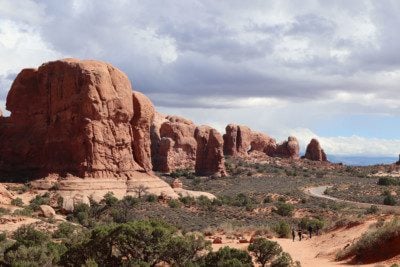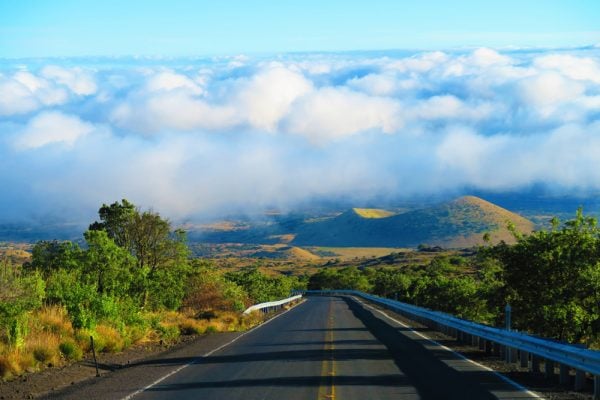1 Day In Death Valley Itinerary
On a one-day visit to Death Valley, visitors can sample most of the national park’s top highlights. This quick escape features some of the finest desert scenery in the world that, at times, feels like a visit to a distant planet. In this one day in Death Valley itinerary, we’ll put the puzzle together and see how to best explore Death Valley on a day trip or on a quick overnight visit.
Why Visit Death Valley?
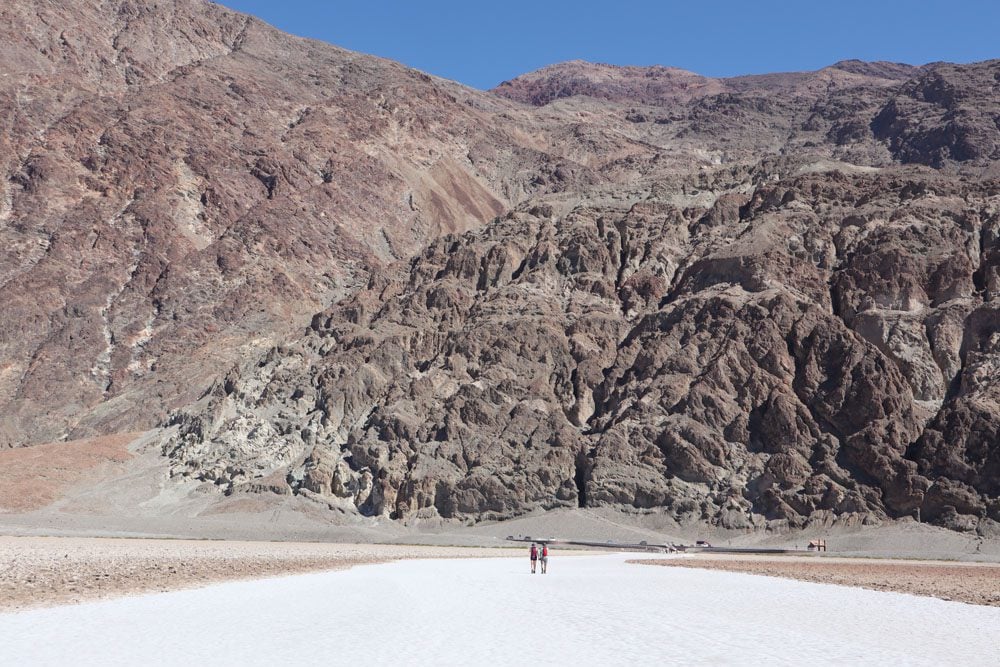
Death Valley is the hottest place on Earth, the driest U.S. national park, and features the lowest elevation in North America. These extremes come together to form one unforgettable adventure.
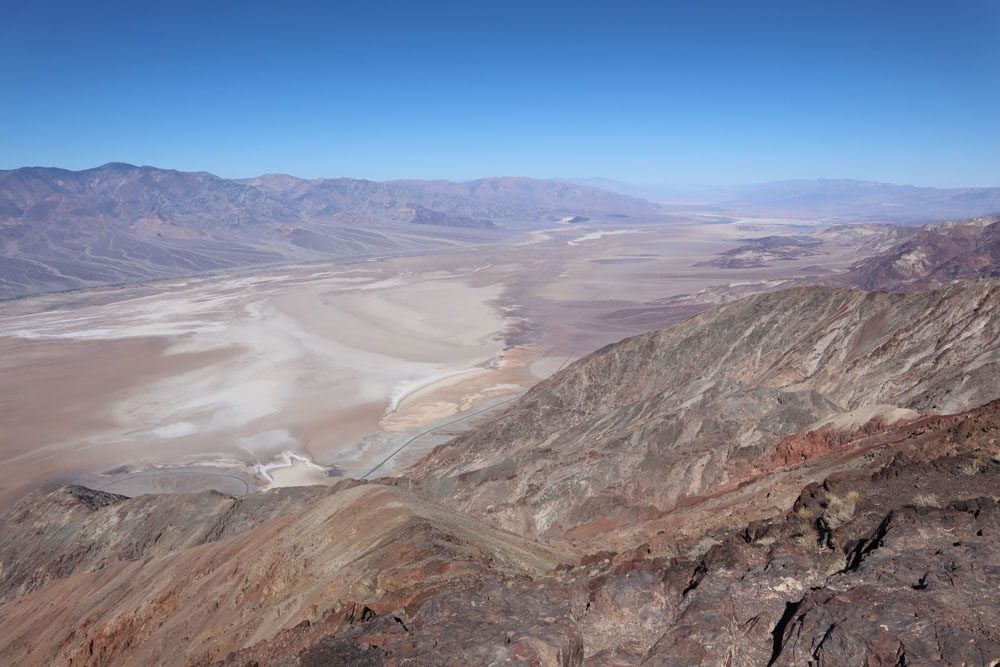
A spectacular desert where nearly all colors of the rainbow can be seen on deeply eroded canyon walls, dry lakes, and sand dunes. Don’t trust the name, Death Valley is alive in so many ways.
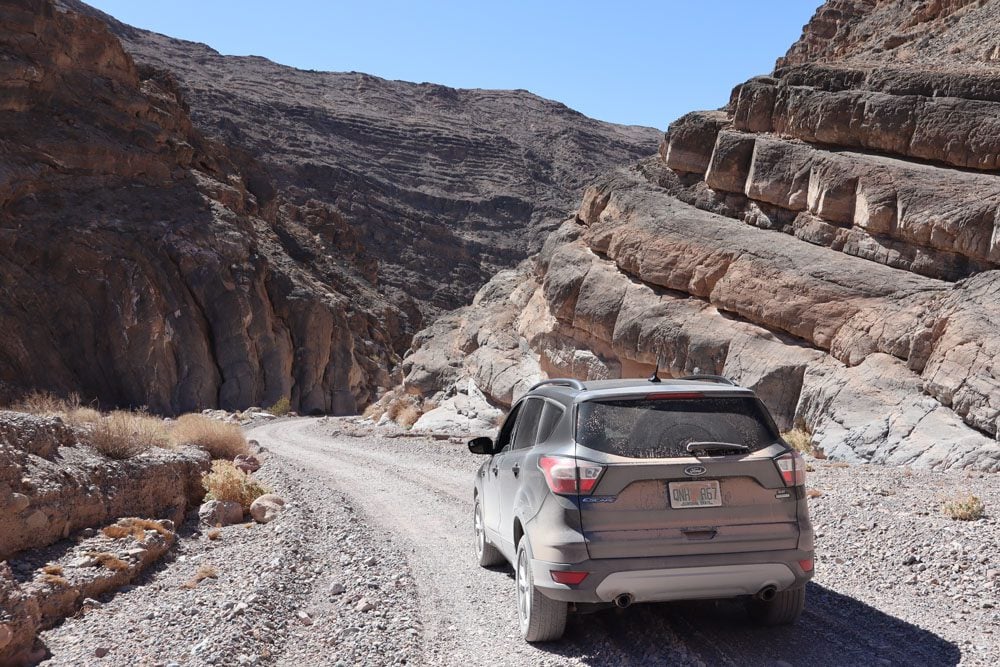
It isn’t rare to see no other human for several hours during the day, and nothing but millions of stars in the night sky. In Death Valley, even the smallest outing requires planning.
Additional Death Valley Resources
Check out the Death Valley travel guide collection for additional information, including essential planning tips, the best hikes, and the top things to do.
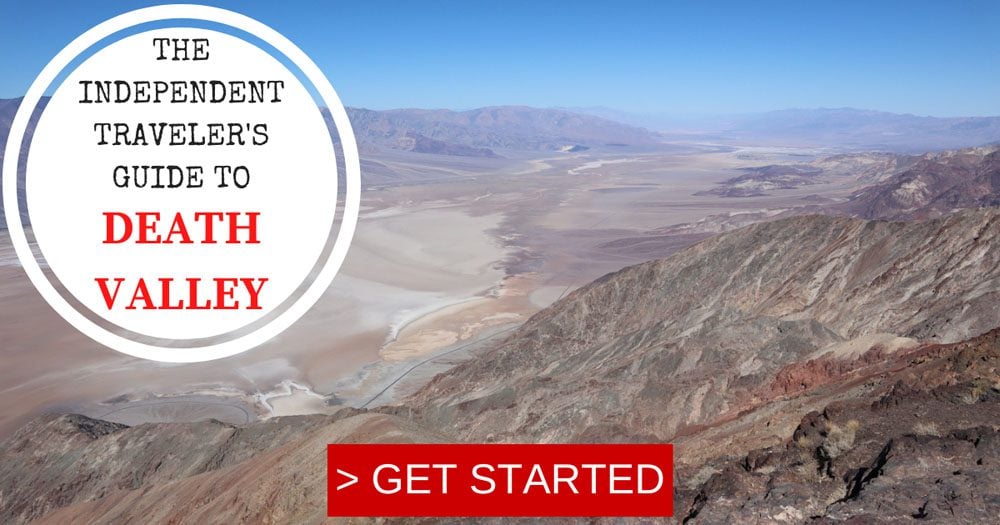
Death Valley Travel Guide
Featuring Death Valley’s top sites, get to know the national park with this Death Valley travel guide video.
One Day in Death Valley Map
All places mentioned in this Death Valley day trip itinerary can be found on this companion map. Simply click on the image to open it in Google Maps.
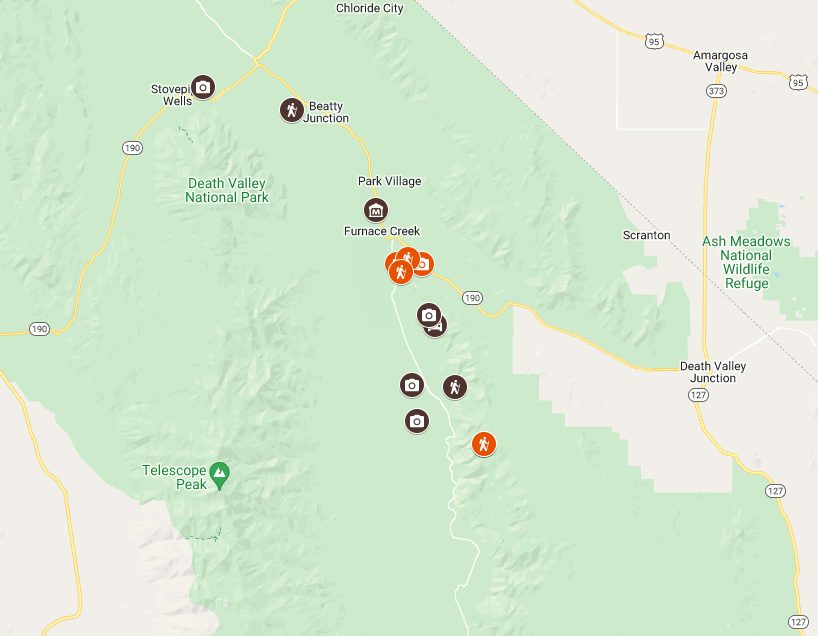
Las Vegas is the closest metropolis and tourist hub to Death Valley at “just” 140 miles away or 2:25 hours of driving. If you’re visiting Las Vegas and looking to do something special, consider joining an organized day trip to Death Valley from Las Vegas. Sure, you can also rent a car and do a self-guided visit, but considering the driving time and the hassle of renting and returning the car, the guided tour seems to be a good option.
Where to Stay?
If you’re spending the night in Death Valley, there are a small handful of hotels to choose from, along with ten campsites.
Inside the National Park
For an upscale stay, the Inn at Death Valley is the park’s sole luxury option and is priced accordingly. In Furnace Creek, the Ranch at Death Valley is a popular option. This historic hotel has been around since 1933, and its prime location in Furnace Creek is appealing. Another solid option is the motel at Stovepipe Wells. Though it may seem to be stuck in the 90s, its rooms have all the basic amenities. The complex also features a reasonably-priced gas station, mini-market, campground, and a restaurant. Slightly out of the way, the Panamint Springs Resort is another option.
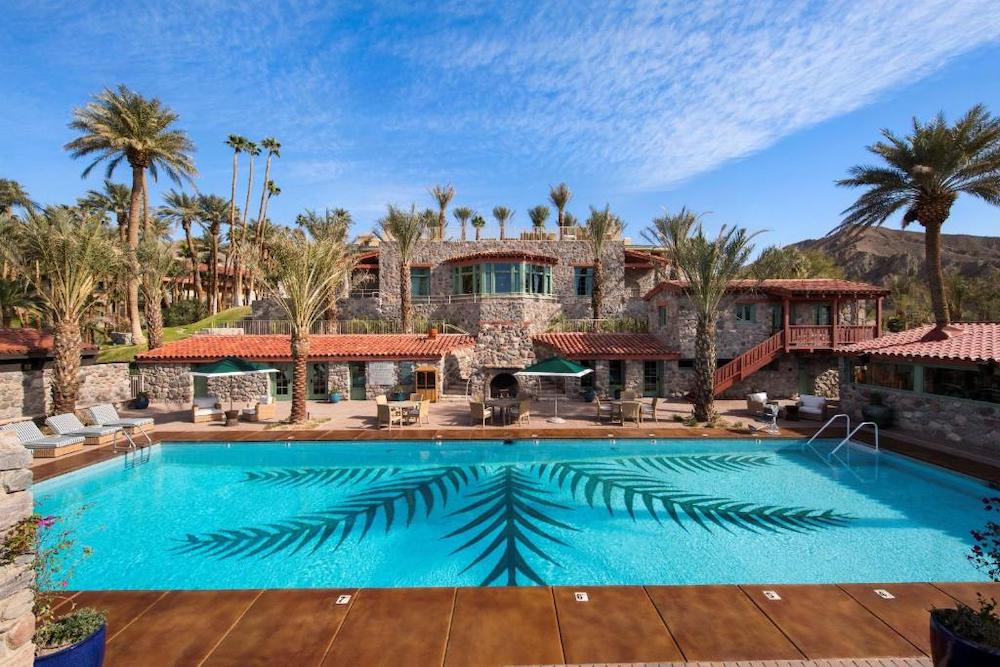
Outside the National Park
If you’re coming to Death Valley as part of a day trip and later continuing onward, several towns on the national park’s periphery can serve as a nightly refuge. If you’re heeded in the direction of Yosemite or Lake Tahoe, the town of Lone Pine is a good option. If you’re hedging south, Barstow is the first town with proper motels along Interstate 15.
Here are all of the accommodations inside but especially around Death Valley that can be booked online via booking.com.
Morning
On our one day in Death Valley National Park, we’ll spend the morning hours getting a bird’s eye view of the valley and begin to descend in elevation towards Badwater Basin.
Optional Sunrise at Zabriskie Point
If you’re an early riser and have spent the night inside the national park, consider heading to Zabriskie Point to watch the sunrise. This is one of the finest scenic viewpoints in Death Valley and we’ll come back to this spot a little later.
Dante’s View
Our first official stop on this one day in Death Valley itinerary is at Dante’s View, the park’s best and most accessible spot for a panoramic view of the valley. A backcountry road finds its way to the famed viewpoint via countless twists and turns. From Dante’s View, the entire valley is beneath your feet and the highest point in the national park at Telescope Peak is dead ahead.
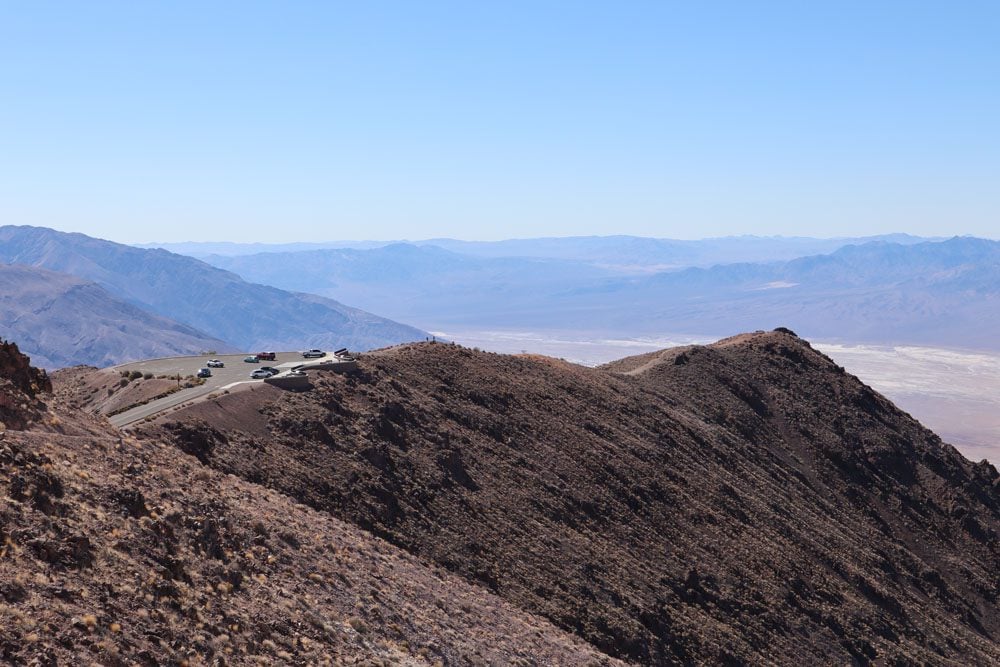

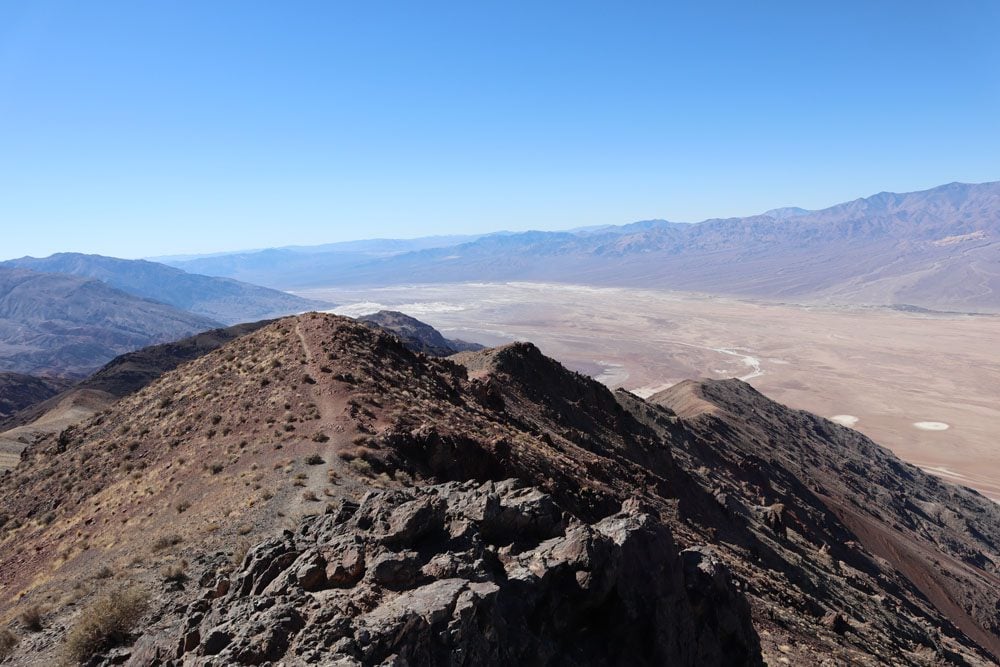
From the official viewpoint, pick up the trail to your left and hike to a secluded spot for additional prime views. You can also pick up the trail to your right and hike along the ridgeline towards Mount Perry until you find your perfect private spot to enjoy this spectacular scenery.
Even in warmer months, it can get very windy and consequently cold at Dante’s View. Be sure to pack something warm in the car.
Zabriskie Point
On the drive from Dante’s View towards Furnace Creek, stop at Zabriskie Point to see some of the most interesting geological formations in Death Valley. From the parking area, make the short hop to the panoramic viewpoint from where the peculiar badland canyons are best appreciated. Over the years, the forces of nature have carved this area into an intricate maze of canyons that appear as a network of veins and arteries when viewed from high above.
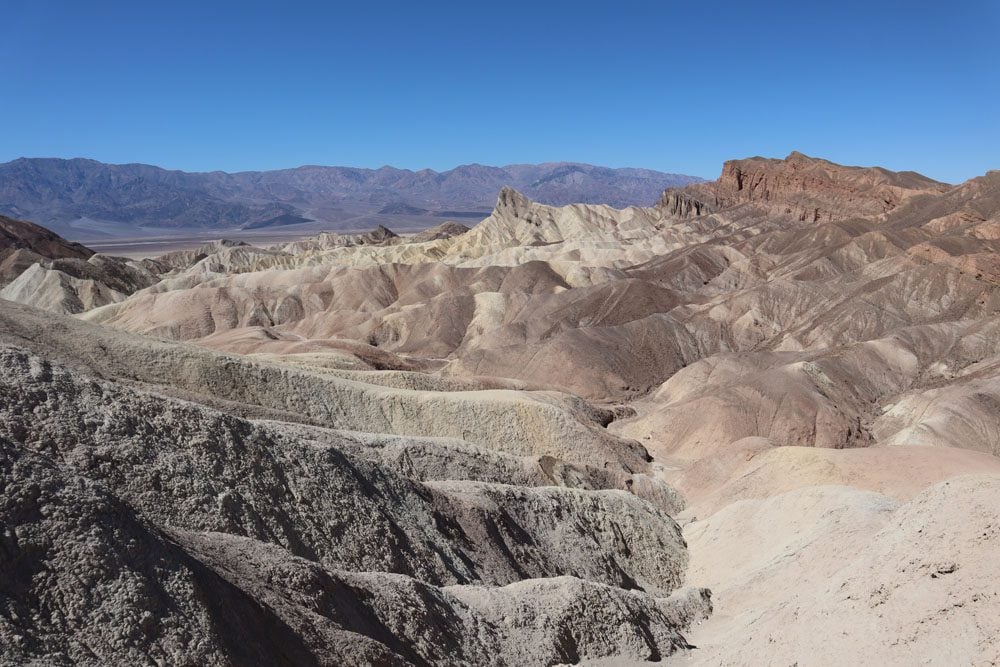
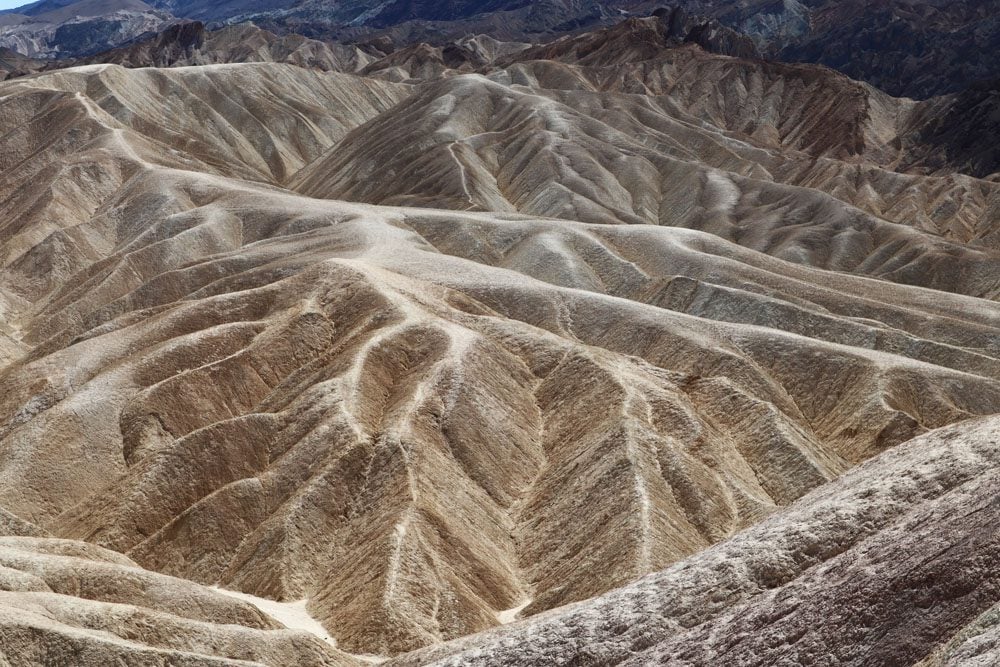
Hiking Options
From Zabriskie Point, several trails head down into the network of canyons. The shortest is the Badlands Loop (2.5 miles roundtrip) which can be extended further through Gower Gulch to Golden Canyon (6.4 miles roundtrip) with an option to detour to the Red Cathedral (extra one mile). Alternatively, drive from Zabriskie Point to Golden Canyon Trailhead and hike to the Red Cathedral. It’s one of the best hikes in Death Valley, a quick and relatively flat 2.9-mile (4.7 km) walk through one of the most impressive badland canyons. The aim of the hike is to reach the Red Cathedral, a seemingly impenetrable fortress of red rock amidst the golden shades that dominated up to this point.
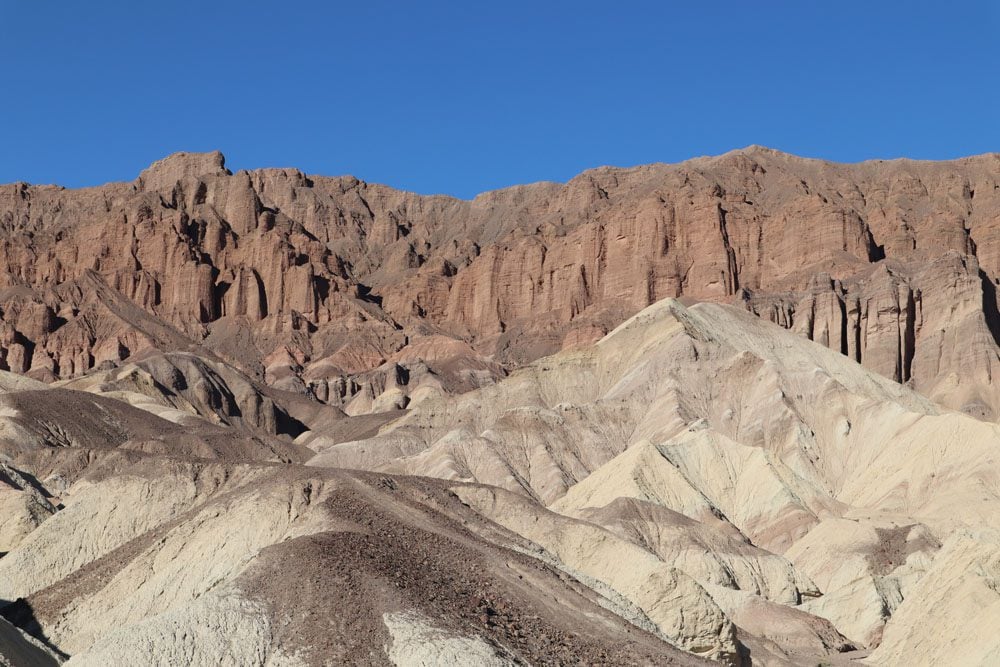
Afternoon
We’ll spend the afternoon on this day trip to Death Valley by first exploring the most popular section of the national park, later heading back to Furnace Creek and beyond towards Stovepipe Wells.
Devil’s Golf Course
The drive toward Badwater Basin is one of the most interesting in Death Valley. To your left are the badland canyons with their intense scars and colors and on your right are the vast salt flats that culminate at Badwater. If you’re visiting Death Valley from late spring to early fall, there’s a very good chance that your car’s thermometer will top 100 degrees Fahrenheit on this stretch of road (37.8 celsius).
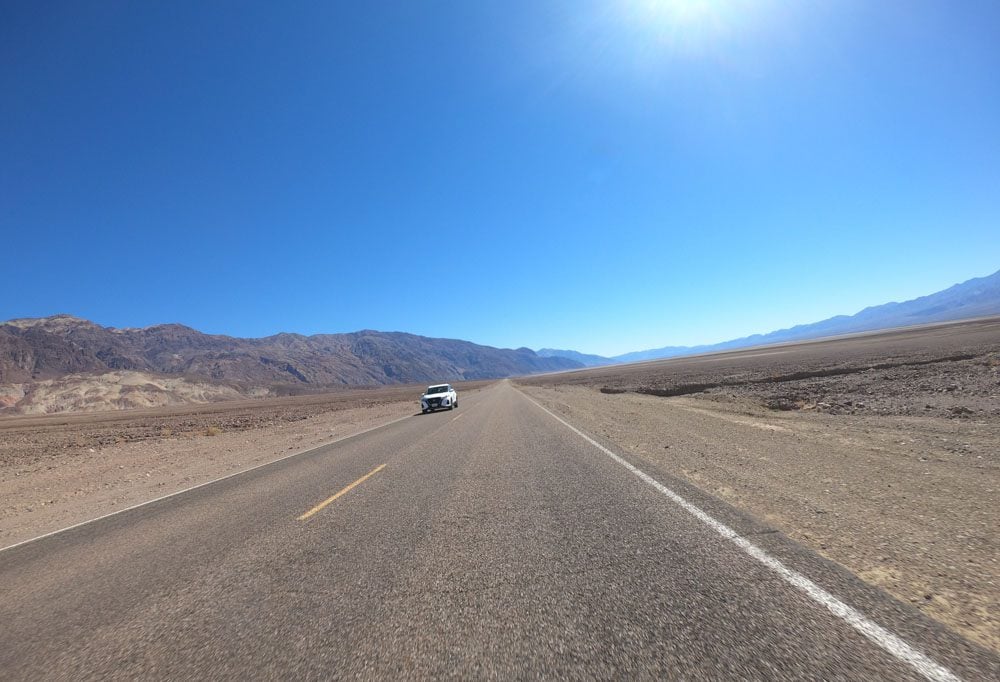
About 20 miles before Badwater, take a right on the dirt road to Devil’s Golf Course. You won’t be able to tee off from here (though you surprisingly can at Furnace Creek), but rather get to see ball-shaped crystallized salt scattered across a seemingly endless field. Deposited by ancient salt lakes and shaped by winds and rain, the crystals are in a constant state of change. If you’re visiting Devil’s Golf Course on a hot day, you might hear a metallic cracking sound as the salt pinnacles expand and contract.
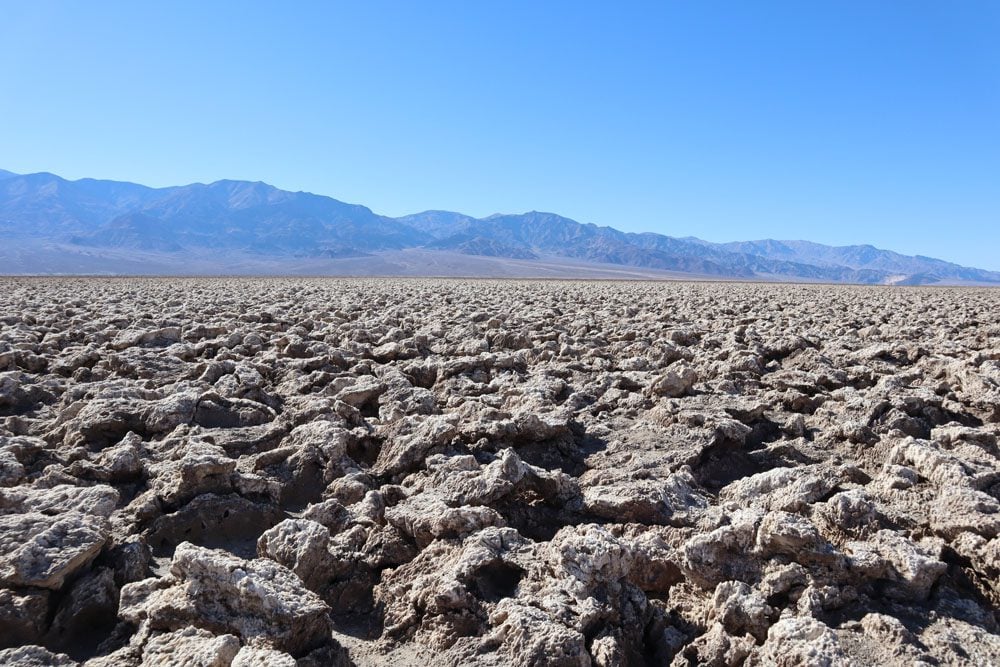
Refrain from venturing into the “golf course” both for the protection of the environment and also for your safety. A small tumble can result in a painful gush from the sharp salt.
Badwater Basin
If you aren’t feeling the heat yet, you will feel it at Badwater Basin, the lowest point in North America in terms of elevation at 282 feet (86 m) below sea level. Badwater Basin is Death Valley’s top attraction, thanks to its prized title and vast salt flats.
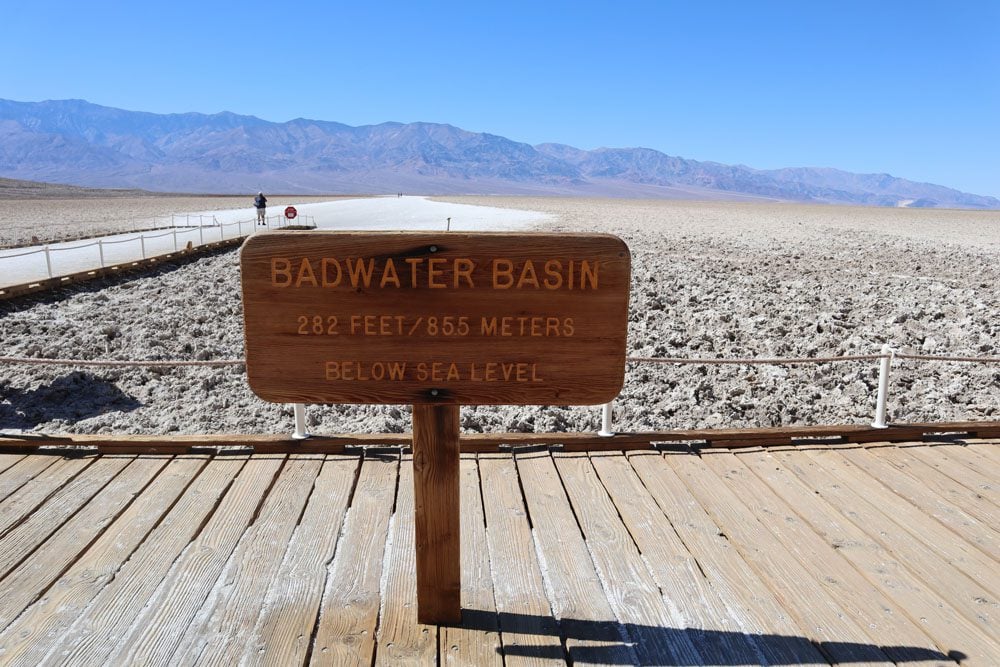
From the parking area, head to the boardwalk and explore Badwater Pool. The water might be extremely salty, but life still exists even in this hostile environment. The water reaches this pool from distant rainfall that drained through an underground system to the lowest possible point.
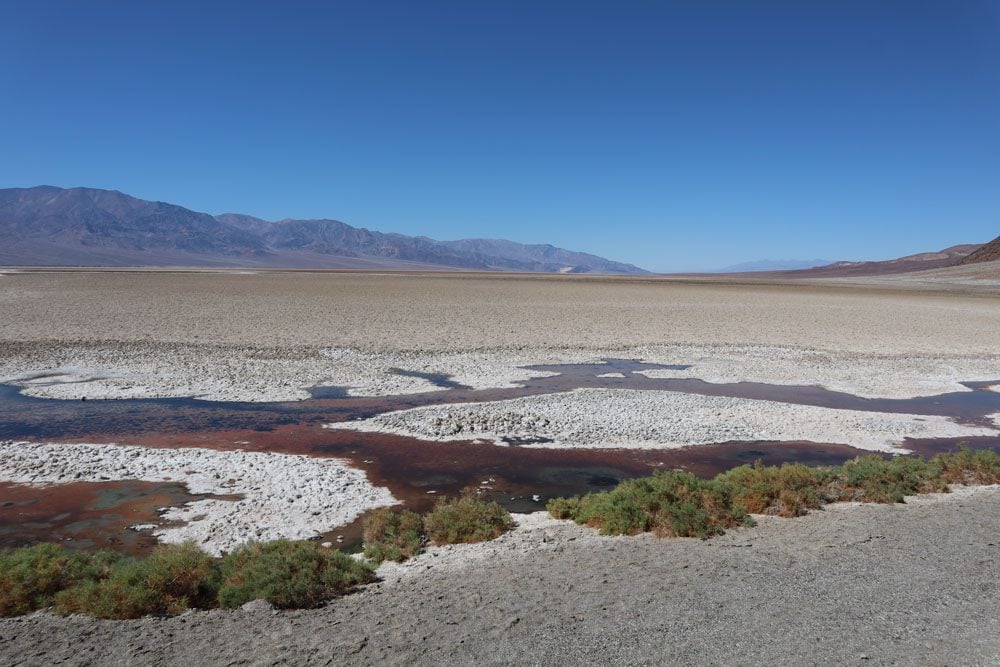
From Badwater Pool, continue straight into the heart of Death Valley along the salt flats. Get a closer look at the incredible crystal-like shapes of the dry salt, constantly altered by wind and rain. Follow the salty snow until you’ve had enough or try to make it to a second marker celebrating Badwater’s record-low elevation.
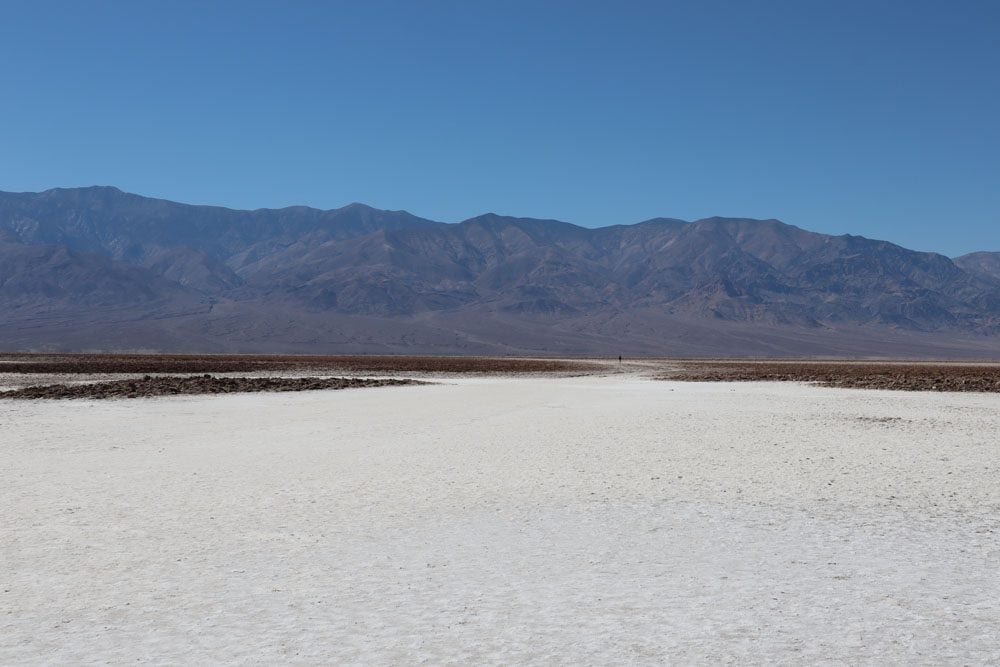
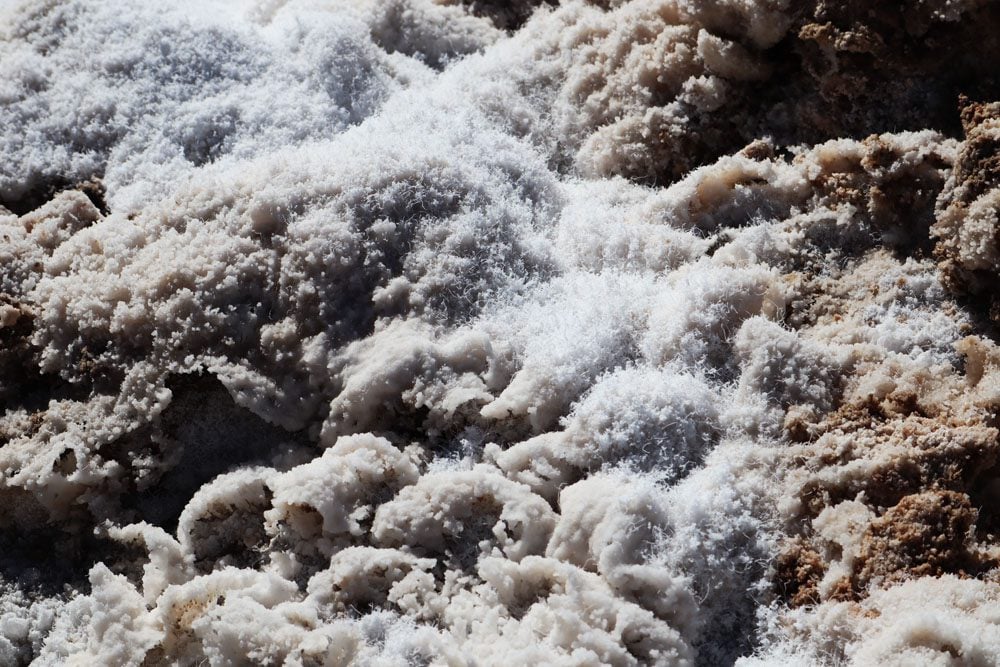

Optional Hike to the Natural Bridge
A 10-minute drive from Badwater Basin brings you to the trailhead of this quick and easy hike. About 500 meters from the parking area (0.3 miles), an impressive natural bridge connects the walls of this canyon. It’s an easy hike that can be extended slightly further to a dry waterfall and even deeper into the canyon until an impassable cliff is reached. The natural bridge is about 35 feet high (10.5 m) and has the same thickness.
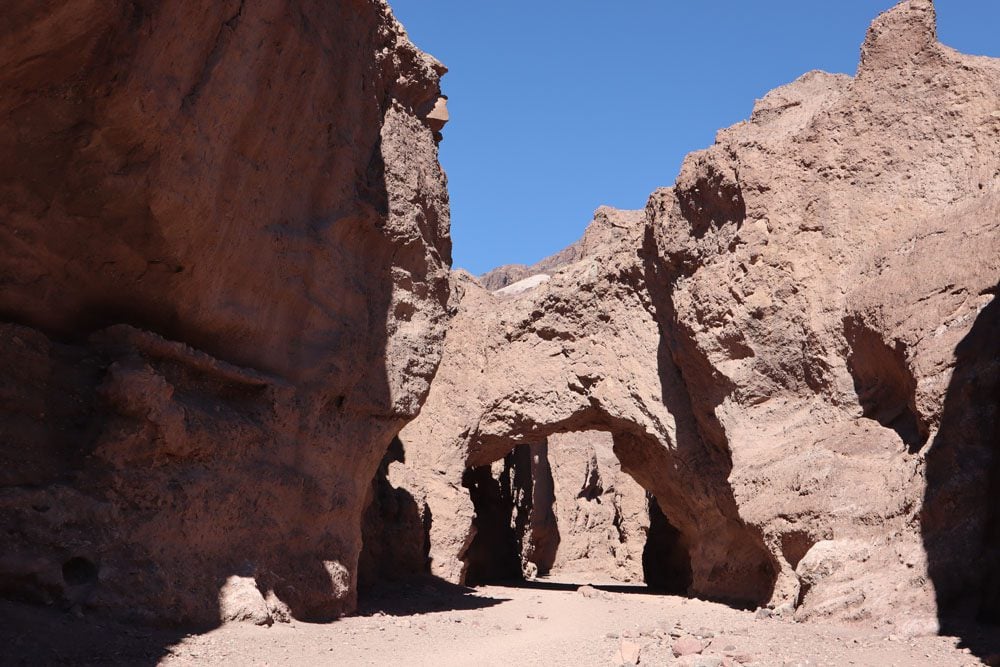
Artists Drive
It is late afternoon by now, the perfect time for Death Valley’s most famous scenic drive. This beautiful one-way, nine-mile (14.5 km) scenic drive is paved throughout and perfectly blends with the surrounding topography.
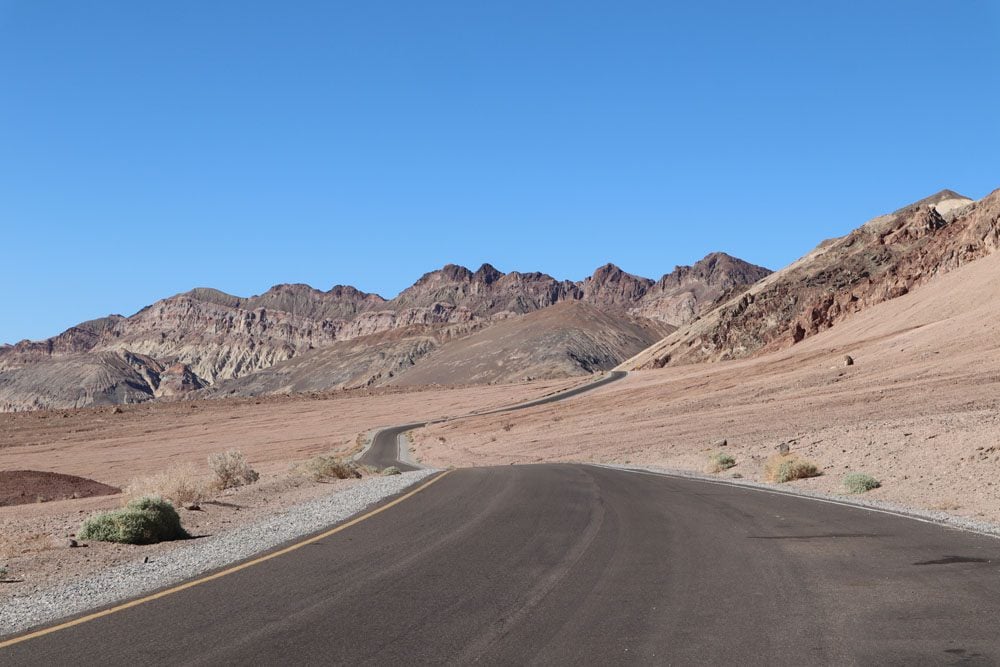
If there is one stop to be made along Artists Drive, it’s at Artists Palette, an exposed hillside on which various minerals mixed and morphed over the years. Every color of the rainbow can be seen, even blue. You can ditch your car at Artists Palette and explore the colorful area from up close.
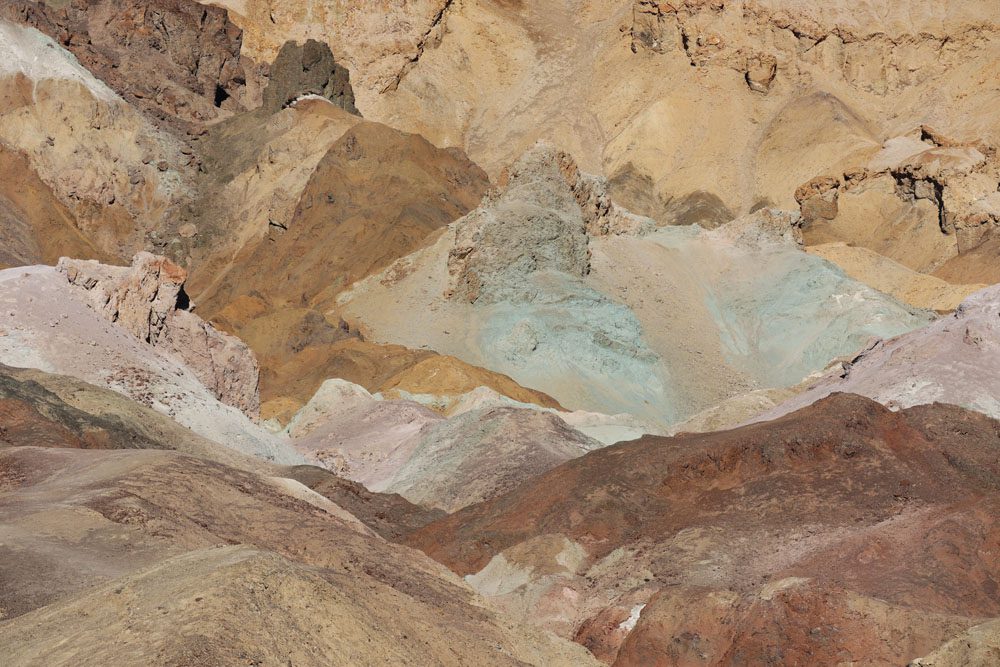
If you’ve skipped some of the hikes mentioned above or are doing well on time, consider stopping on the way to our next official stop at Harmony Borax Works. This open-air museum features a short interpretive trail about Death Valley’s borax mining. You can also stop at Salt Creek and walk the length of its interpretive trail to see with your own eyes that there is plenty of life in Death Valley.
Sunset at Mesquite Flat Sand Dunes
With sand dunes towering over 100 feet high and constantly shaped by the passing winds, Mesquite Flat Sand Dunes is the perfect spot to enjoy the sunset in Death Valley. With no official trail leading through this maze of dunes, it’s very easy to find a lonely spot atop one of the dunes and enjoy the changing colors.
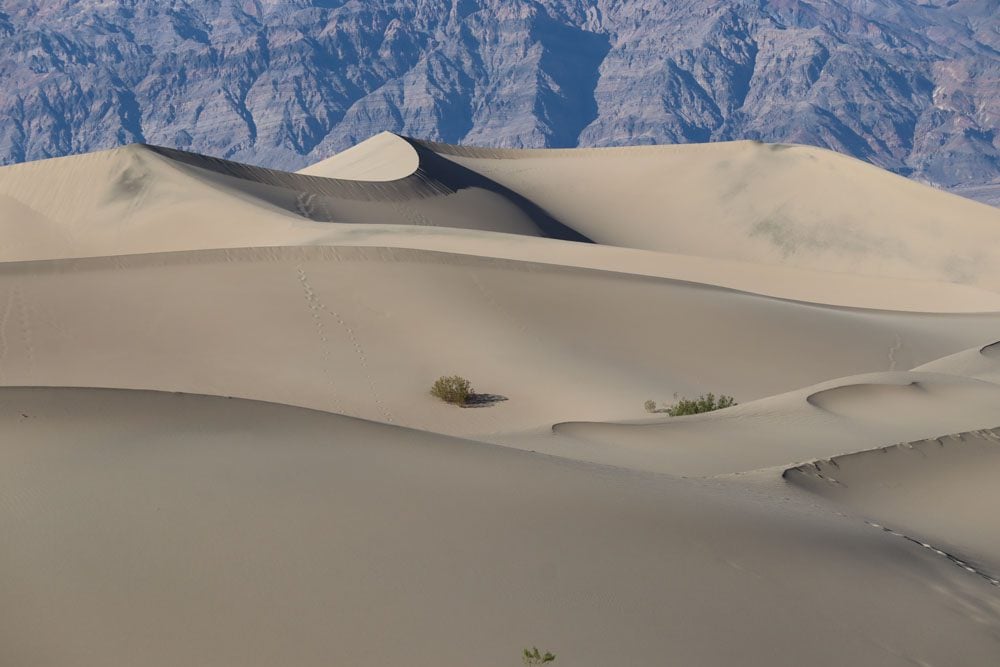
Evening
If you’re only visiting Death Valley as part of a quick day trip, you will most likely head out of the national park before darkness falls. But if you’re spending the night in Death Valley, don’t call it a night just yet.
Stargazing
The best evening activity in Death Valley is without a doubt watching the night sky. The skies here are virtually free of light pollution, so stars can be seen by the thousands. You can join a guided night sky ranger program or pretty much use any spot to explore the night sky. There are several popular locations, including the Mesquite Flat Sand Dunes (but not from its parking area), Harmony Borax Works, Dante’s View, Badwater Basin, and the information area at the junction of Daylight Pass Road and Beatty Road.
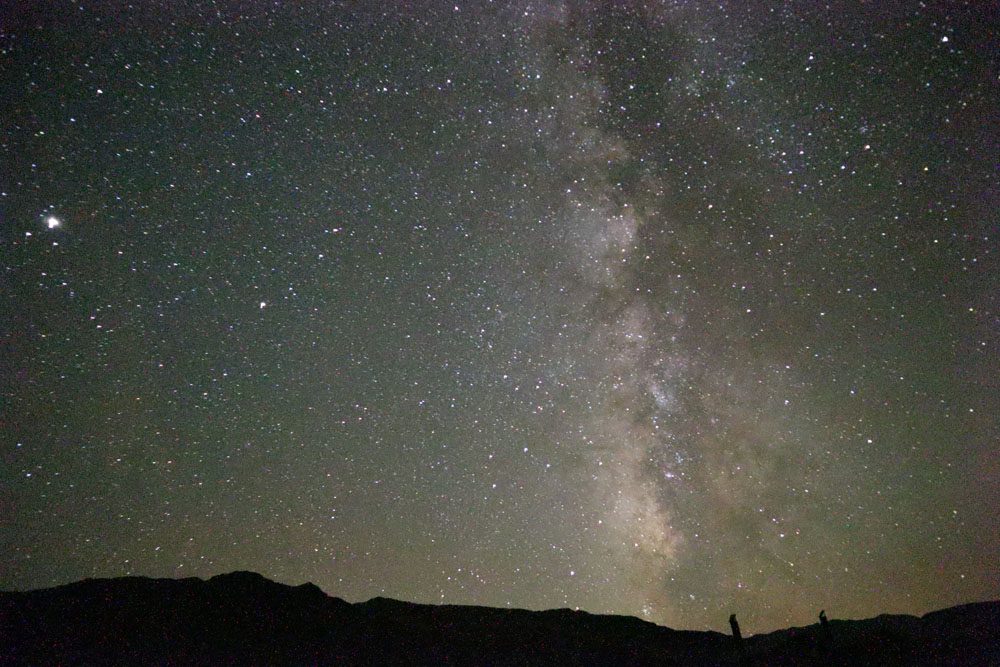
Be sure to download a night sky app to your mobile phone so you can see which stars and planets you’re seeing, and cover-up even if it’s not cold to fight pesky flies.
What’s Next?
This one day in Death Valley itinerary will give you a good taste of what the national park has to offer and it’s very doable even on a day trip to Death Valley. For more information about Death Valley, including essential planning tips and the best hikes, check out the Death Valley travel guide collection.

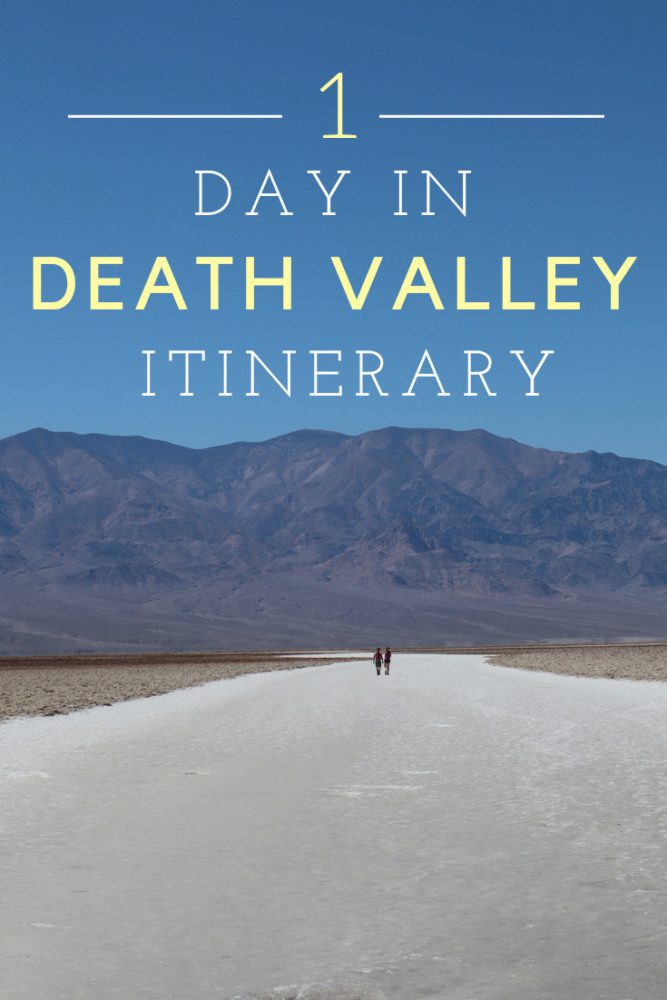
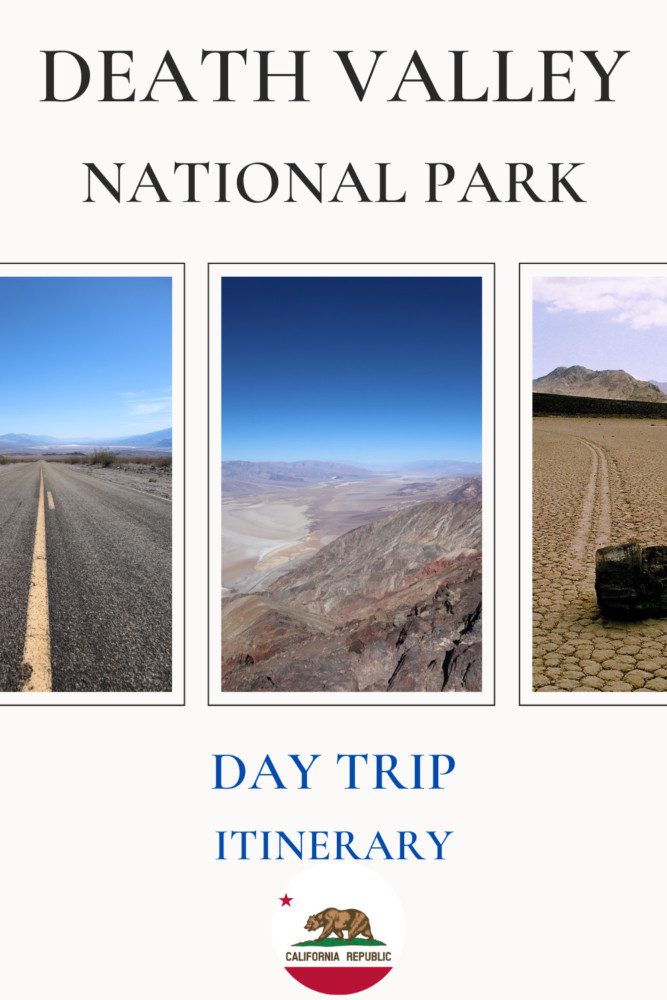
Pin These Images To Your Favorite Boards




